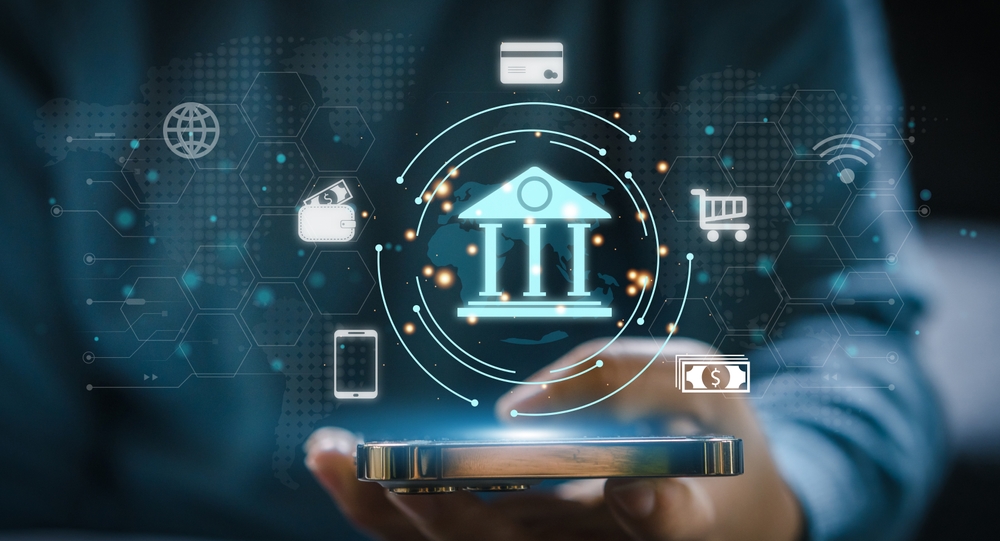Future of Digital Banking Creates A Seamless Financial Ecosystem

The traditional image of banking—long lines, paper forms, and limited hours—is rapidly becoming a relic of the past. The financial industry is in the midst of a profound and irreversible transformation, driven by a wave of technological innovation that is reshaping how we manage, spend, and invest our money. The future of digital banking is not just about mobile apps and online transfers; it’s about a seamless, intelligent, and highly personalized financial ecosystem that is accessible from anywhere in the world, 24/7. This revolution is being fueled by a convergence of artificial intelligence, blockchain technology, and a customer-centric approach that is putting the power back into the hands of the consumer. This extensive article will delve deep into the key forces driving this change, the groundbreaking technologies that are making it possible, the profound impact it is having on both consumers and financial institutions, and the challenges that must be overcome to fully realize this vision.
The Three Pillars of Digital Banking’s Evolution

The future of digital banking is built on three core pillars that are fundamentally changing the relationship between people and their money: hyper-personalization, intelligent automation, and decentralized finance.
A. Hyper-Personalization
Gone are the days of a one-size-fits-all banking experience. The future of digital banking is driven by hyper-personalization, where every service, recommendation, and interaction is tailored to an individual’s unique financial needs and habits.
- AI-Powered Financial Assistants: AI algorithms can analyze a user’s spending data in real-time, providing proactive advice on how to save more, reduce unnecessary expenses, or even suggest personalized investment opportunities. These AI assistants act as a digital financial advisor, available at any time to help you make smarter money decisions.
- Personalized Product Recommendations: Instead of generic offers for loans or credit cards, digital banks can use AI to offer products that are a perfect fit for a user’s financial situation. For example, an AI might notice that a user is consistently paying high-interest credit card debt and suggest a low-interest personal loan to consolidate it, a proactive measure that benefits the consumer directly.
- Seamless User Experience: User experience (UX) is a top priority for digital banks. They are investing heavily in creating interfaces that are intuitive, easy to navigate, and visually appealing. This focus on design makes managing finances less of a chore and more of a fluid, engaging experience.
B. Intelligent Automation
Intelligent automation is taking the tedious, repetitive tasks out of banking, freeing up time for both consumers and financial institutions.
- Automated Budgeting: AI-powered budgeting tools can automatically categorize a user’s expenses and create a personalized budget in minutes. They can send real-time alerts when a user is close to their spending limit and provide insights into where they can save more money. This takes the stress and effort out of managing a budget.
- Automated Savings and Investments: This is perhaps the single most powerful tool for building wealth. Users can set up automated transfers to their savings and investment accounts. Some digital banks offer “round-up” features that round up every purchase to the nearest dollar and automatically invest the difference, a low-effort way to build a consistent investment habit.
- Fraud Detection and Security: AI algorithms can analyze millions of transactions in seconds, identifying unusual patterns that may indicate fraudulent activity. This proactive security measure helps to prevent theft and protect a user’s assets, providing a level of security that far surpasses traditional, manual systems.
C. Decentralized Finance (DeFi) and Blockchain
The biggest shift in the future of banking may come from outside the traditional system. Decentralized finance (DeFi), built on blockchain technology, has the potential to fundamentally reshape the financial industry.
- Peer-to-Peer Transactions: Blockchain allows for secure, direct transactions between two parties without the need for a third-party intermediary like a bank. This can lead to lower transaction fees and faster transfer times, especially for international payments.
- Smart Contracts: Smart contracts are self-executing contracts with the terms of the agreement directly written into lines of code. They can automate a variety of financial processes, from lending and borrowing to insurance claims, removing the need for human intervention and the potential for error.
- Cryptocurrency Integration: The future of digital banking will inevitably involve the seamless integration of cryptocurrencies. Digital banks will allow users to buy, sell, and store crypto alongside their traditional assets, providing a one-stop-shop for managing all their finances.
The Impact on Consumers and Financial Institutions
The move to digital banking is having a profound and far-reaching impact on our world, from the way we spend to the way financial institutions operate.
- A. For Consumers:
- Greater Accessibility: Digital banking makes financial services more accessible to everyone, including the unbanked and underbanked populations around the world. All you need is a smartphone and an internet connection to open an account, send money, or apply for a loan.
- Increased Transparency: Digital banks provide real-time, transparent data on all your financial transactions. This gives you a clear picture of your finances and empowers you to make more informed decisions.
- Lower Costs: Digital banks have lower overhead costs than traditional banks with physical branches. These savings are often passed on to the consumer in the form of lower fees, better interest rates, and higher returns on savings.
- B. For Financial Institutions:
- A Focus on Customer Experience: To compete with nimble fintech startups, traditional banks are being forced to put a greater emphasis on customer experience. They are investing in digital platforms, user-friendly apps, and personalized services to retain their customer base.
- New Revenue Streams: Digital banking is creating new revenue streams for financial institutions. They can offer a variety of personalized services, from AI-powered financial advice to a platform for investing in cryptocurrency.
- Reduced Overhead: The move to digital banking allows financial institutions to reduce their overhead costs by closing physical branches, automating a variety of back-office processes, and reducing the need for a large staff.
The Challenges and the Road Ahead

The path to this futuristic reality is not without its obstacles. Several significant challenges must be addressed for this vision to be fully realized.
- A. Cybersecurity and Privacy: With our financial lives increasingly moving online, cybersecurity is a top priority. Digital banks must invest heavily in advanced security measures to protect their users’ data and assets from hackers. The challenge is to provide a seamless user experience while maintaining a high level of security.
- B. Regulatory and Legal Frameworks: The current legal system is not equipped to handle the complexities of decentralized finance and cryptocurrencies. Governments and regulatory bodies must work to create a clear and comprehensive framework that protects consumers and promotes innovation without stifling it.
- C. The Digital Divide: While digital banking is making financial services more accessible, a significant portion of the global population still lacks access to a smartphone or a reliable internet connection. Bridging this digital divide is crucial to ensuring that everyone can benefit from the financial revolution.
- D. Building Trust: For a consumer to fully embrace digital banking, they must trust that their money and data are safe. Traditional banks have the advantage of a long-standing reputation, while digital-only banks must work to build that trust through transparent policies, strong security, and a reliable track record.
Conclusion
The future of digital banking is not a distant vision; it is a tangible reality unfolding before our eyes. The traditional banking model is being systematically replaced by a seamless, intelligent, and highly personalized financial ecosystem that is accessible to anyone with a smartphone. This revolution is being fueled by a powerful convergence of technologies, from AI-powered financial assistants and intelligent automation to the transformative potential of blockchain and decentralized finance. The result is a world where managing your money is no longer a chore but an intuitive and engaging experience, and where financial services are more transparent, accessible, and affordable than ever before.
The impact of this transformation is profound and far-reaching. It is empowering consumers with a new level of control over their finances, providing a powerful tool for building wealth, and bringing financial services to a global population that was once excluded from the traditional banking system. For financial institutions, it is forcing a necessary evolution, pushing them to prioritize customer experience and embrace innovation to stay relevant in a hyper-competitive market.
While significant challenges remain, particularly in the areas of cybersecurity, regulation, and bridging the digital divide, the trajectory is clear and irreversible. The future of banking is not about brick-and-mortar branches; it is about a digital-first, customer-centric approach that redefines what it means to manage money. It is a win-win for everyone, paving the way for a more secure, efficient, and equitable financial future. The time to embrace this revolution is now, and your future self will thank you for it.








